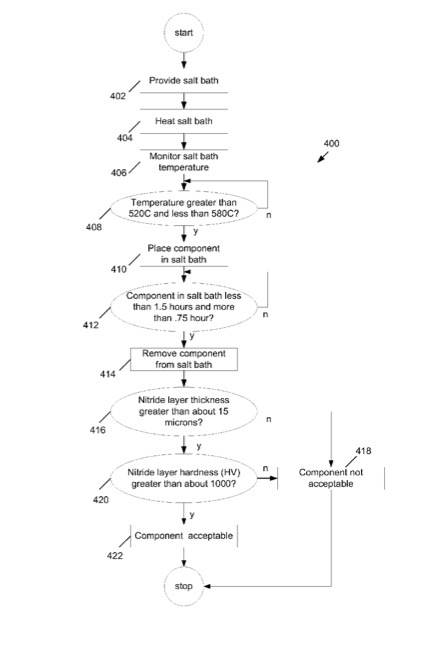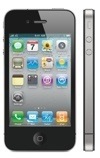As evidenced by a new patent (number 20100273538) at the US Patent & Trademark Office, Apple is working to make its devices even more scratch proof. The patent is for nitriding stainless steel for consumer electronics products.
It involves cost effective system, method and apparatus adapted to provide a nitride layer on stainless steel used for the manufacture of consumer electronic products. In addition to providing a durable, hard surface that is both scratch and impact resistant, the nitride layer allows for the natural surface color and texture of the underlying stainless steel to remain visible to the user. It is this natural surface color and texture of the stainless steel that adds to the aesthetically pleasing appearance of the consumer electronic product thereby enhancing the user’s overall experience, says Apple. The inventor is Douglas Weber.
Here’s Apple’s background and summary of the invention: “The stainless steels owe their resistance to corrosion to the presence of chromium. Currently, there is a range of stainless steels from the plain chromium variety to those containing up to six alloying elements in addition to the usual impurities. However, it will be readily appreciated that chromium is the chief alloying element in iron and steel for inhibiting corrosion. This resistance is not due to the inertness of the chromium, for it combines with oxygen with extreme rapidity, but primarily to the oxide so formed that is very thin and stable, continuous and impervious to further attack.
“Stainless steel is defined as a steel alloy with a minimum of 10% chromium (Cr) content by mass. Stainless steel differs from carbon steel by amount of chromium present. Carbon steel rusts when exposed to air and moisture. This iron oxide film is active and accelerates corrosion by forming more iron oxide. In contrast to ferritic steels, stainless steels have sufficient amount of chromium present so that a passive film of chromium(III) oxide (Cr2O3) forms within a surface region. It is this film that prevents further surface corrosion and blocks corrosion spreading in the metal’s internal structure.
“There are different types of stainless steels. Austenitic stainless steel is formed when nickel (Ni) is added to the iron melt. In this way, the austenitic structure of iron is stabilized. This austenitic structure makes austenitic stainless steels non-magnetic and therefore less likely to inhibit electromagnetic (EM) activity which can be a significant consideration when used in the manufacture of consumer electronics such as cell phones that utilize RF, Wi Fi, BlueTooth, or other EM based wireless technologies.
“Over the years, stainless steels have become firmly established as materials for cooking utensils, fasteners, cutlery, flatware, decorative architectural hardware, and equipment for use in chemical plants, dairy and food-processing plants, health and sanitation applications, petroleum and petrochemical plants, textile plants, and the pharmaceutical and transportation industries. Some of these applications involve exposure to either elevated or cryogenic temperatures; austenitic stainless steels are well suited to either type of service. However, it has now become desirable to use stainless steel in the manufacture of a variety of portable consumer electronic products particularly for the visual impact and structural integrity provided.
“However, in order to maintain the look and feel of the stainless steel used in consumer electronics, it is necessary to protect the stainless steel surface from damage that would adversely affect the outward appearance. Furthermore, the protection provided the stainless steel surface must not adversely affect the look and feel of the component. Therefore, it is desirable to preserve the appearance of consumer electronic products that utilize stainless steel as an aesthetic and structural aspect.
“The present invention facilitates the mass production of consistent and aesthetically pleasing nitrided stainless steel components used for consumer electronic products. Such components can be used for a variety of applications, such as to form outer housings for a laptop computer, media players, cell phones or other similar devices. This can be accomplished by providing a variety of manufacturing techniques and features to traditional stainless steel nitriding process typically used for industrial or environmentally challenged (i.e., corrosive) environments not generally encountered in typical consumer applications.
“In one embodiment, a nitride layer is formed on a stainless steel component used for a consumer electronic product. In the described embodiment, the stainless steel can be austenitic stainless steel where the nitride layer is formed using a salt bath nitride process. The initial nitride layer formed can be at least 15-30 microns thick with a Vickers Hardness (HV) value of at least 1000. In the described embodiment, stainless steel component can be placed in the salt bath at not more than 580 C for a period of time not to exceed approximately 1.5 hours.
“A finished nitride layer is formed by performing at least one finishing operation on the initial nitride layer. The at least one finishing operation removes at most about 10% of the initial nitride layer.
“In another embodiment, a process for preparing a stainless steel housing adapted for assembly of a portable consumer electronic device that includes a plurality of electrical components is described.”



